Ganesha’s Sacred Symbols
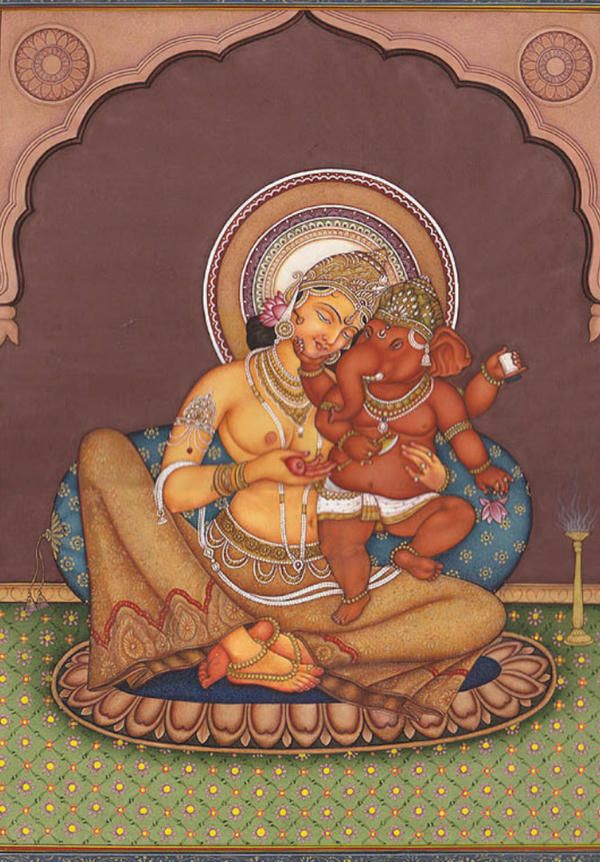
FELICITOUS EMBLEMS, INSIGNIA AND ICONS ARE attributed to each of the Hindu Gods and Goddesses to symbolize the manifest mental powers of that particular Third World Mahadeva. The vitarka mudra, — gesture of debate — is associated with Lord Ganeshaa, as are red and yellow flowers. Everywhere the elephant symbolizes strength, intelligence and majestic poise. So honored was the elephant among the creatures that it was used in regal days to select a successor to the throne. In ancient Bharat the superiority of a maharaja’s army was measured by the strength of his elephant brigade — the largest kraal on record being 5,000, owned by Rajaraja Chola. In India, the white elephant is a symbol of purity (elephants, despite their size, are pure vegetarians), and its birth was said to usher in an era of prosperity and plenitude for the entire nation. There are many stories surrounding visions of a white elephant, including that which the mother of Prince Siddhartha had before his birth. In this chapter of Loving Ganesha we describe briefly some of the traditional symbols and their meanings.
“His four arms stand for His immense power in helping humanity. The noose and the goad borne in two of His hands stand for His all-pervasiveness and grace. The broken tusk in the right hand shows that He is the refuge for all. His huge belly is indicative of His tolerance and also signifies that all things, the entire Universe, are contained in Him. His feet stand for the bestowal of siddhi and buddhi, attainment of desires and knowledge. The modaka (sweet goody) in His hand is symbolic of jnana, conferring bliss. His mount, the shrew, represents the worldly desires which are to be overcome” (M. Arunachalam, Festivals of Tamil Nadu, 1980, p. 112).
Shankha, Conch
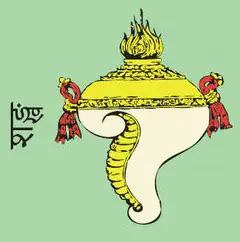
Ganesha listens to the puja conch’s loud sound, reminding Him of elephants’ trumpeting happily in the jungle. He summons, “Come one and all to Me and pray.”
Ankusha, Goad
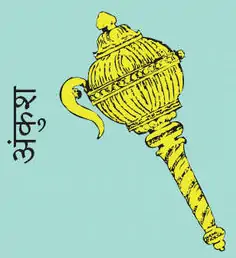
Loving Ganesha’s deliberate mind prods dullards on in their birth karmas whenever they tarry. with His ankusha He goads forward all souls that are moving too slowly.
Parashu, Axe
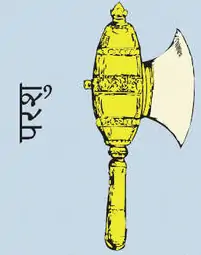
Loving Ganesha knows there are difficult times ahead for some of His devotees. He protects them with His parashu in gentle ways from evils they have attracted.
Pasha, Noose
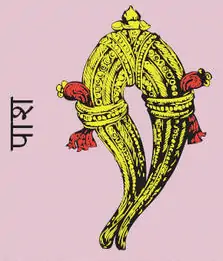
Loving Ganesa’s provident mind, like the noose, draws close those He loves most dearly and reaches out to encircle and save strayed ones in extraordinary ways.
Vajratrishula, Lightning Bolt
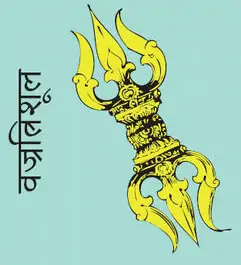
Loving Ganesha, like His brother Murugan, wields a sure weapon, the lightning bolt: spirit over mind, mind over matter, ruling both the higher and lower chakras.
Chakra, Discus
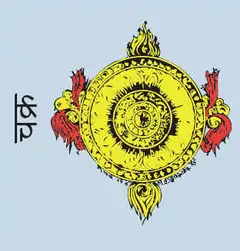
Loving Ganesha holds the discus, symbol of the sun and of the mind, as the moon symbolizes the emotions. Employed as a weapon, it is the intellect divinely empowered.
Modakapatra, Bowl of Sweets
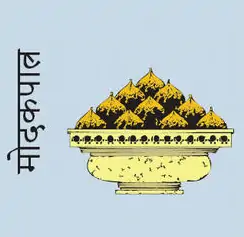
Loving Ganesha is said to have a sweet tooth, or tusk. But the modaka ball is a symbol of what He loves most, moksha, liberation, the sweetest of all things sweet.
Gada, Mace
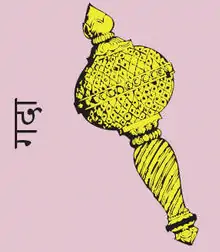
Loving Ganesha is decisive and commanding, as symbolized by gada, His mace. He casts karmas back on devotees for resolution, never letting up until completion.
Chhuri, Dagger
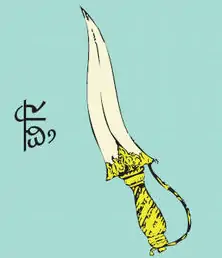
Loving Ganesha sometimes holds the dagger, keenly sharp, likened to the “razor’s edge,” the narrow and sometimes difficult path the spiritual aspirant must walk.
Rudraksha Mala, Prayer Beads
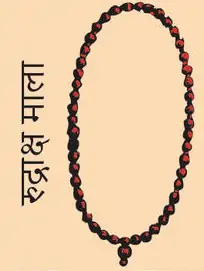
Loving Ganesha sits at Lord Siva’s holy feet with japa mala, His prayer beads, in hand, waiting for instruction from the Supreme Lord of all the Gods, His father.
Pushpashara, Flower Arrow
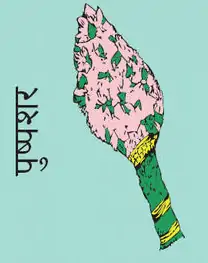
Loving Ganesha shoots flower-covered arrows from His sugar cane bow in guidance to devotees, so they will not wander too far from dharma’s path of true fulfillment.
Amritakumbha, Pot of Nectar
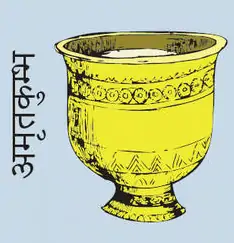
Loving Ganesha receives a bath whenever a worshiper knocks his temples with arms crossed. The amrita flows from the sahasrara down to His seat at the muladhara’s base.
Padma, Lotus
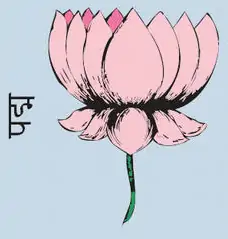
Ganesha wants devotees to learn confidence from the potential of the lotus flower: coming from the depths of the mud into the bud’s opening high above the water.
Ikshukarmuka, Sugar Cane Bow
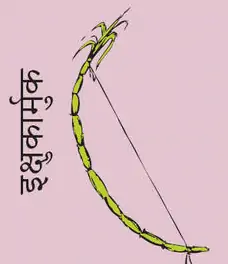
Loving Ganesha shows His generous nature of giving all that is good to devotees. His sugar cane bow shoots the kindest arrows, which are projections of His thought.
Shara, Arrow
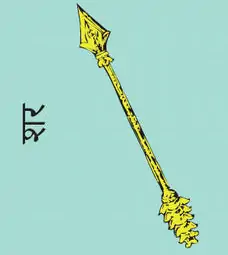
Loving Ganesha has power over thought, and each one hits its mark. Bow drawn, arrow aimed, He teaches us to precisely begin all undertakings with good intentions.
Vina, Indian Lute
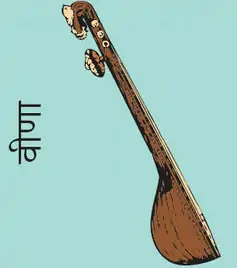
Loving Ganesha is sound in all its beauty and meaning. Siva is the ocean; Ganesha is its sound. Siva, the wind God; Ganesha its sound. Listen to the vina within and hear.
Asura, Goblin
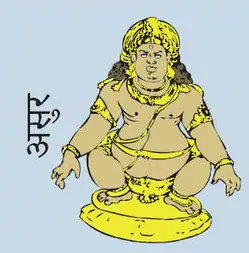
Loving Ganesha is not beyond frightening those who live in the chakra of fear by sending His ganas to lift them into a better life. Sometimes fear is a helpmate in need.
Danda, Stick
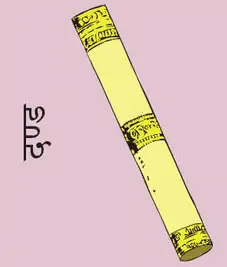
Ganesha carries a short stick, a sign of authority, warning all not to impede the noble ways of dharma and restraining those who have as much as the thought to do so.
Chamara, Fly-Whisk Fan
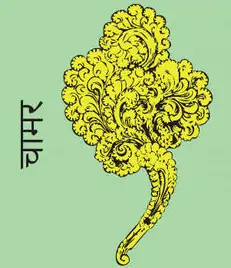
Loving Ganesha sits, as He always does, whisking away the past within the minds of devotees, young and old, rich and poor, educated and practical – because He is so wise.
Kamandalu, Water Vessel
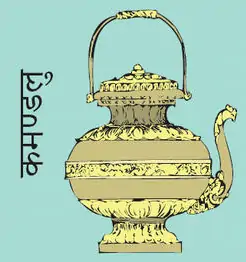
Loving Ganesha, dear to sannyasins, keeps their water vessel full. Symbol of fullness, meeting all needs, kamandalu eternally pours out, never needing to be filled.
Dhanush, Bow

Loving Ganesha is discreet as He draws His bow and bends His thoughts into forms most helpful to His dear devotees. They all cherish all attentions with great ecstasy.
Naga, Serpent
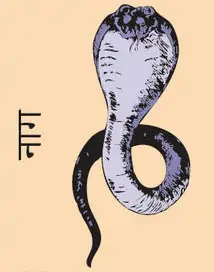
Loving Ganesha has a snake as His pet. Many are afraid of such creatures; but He tells us that it is the kundalini within all, and each one can rise above all adversity.
Shalipallava, Rice Sprig
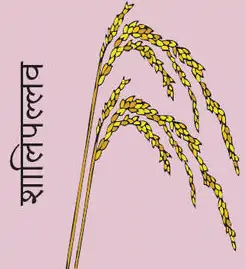
Loving Ganesha knows rice is the life-sustainer of villagers and city folk alike. Holding a sprig of paddy, He assures rains will come and all will be well at harvest time.
Mudgara, Hammer
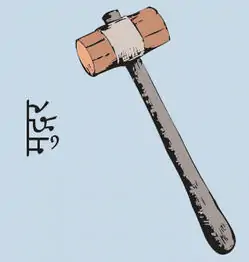
Loving Ganesha wields a mallet, badge of His office as Patron of Arts and Crafts, protector of all who build and shape, chisel and sculpt for the benefit of society.
Shastra, Scripture
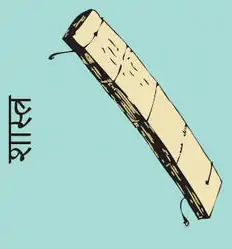
Loving Ganesha studiously edits all the scriptures on this planet and on others, too. His ever-ready, potent pen writes and edits life’s ordinances and comments on their meanings.
Kalpavriksha, Wish-Fulfilling Tree
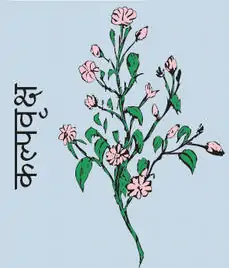
Loving Ganesha holds a sprig of the wish-fulfilling tree to tell us that all our wishes will be gratified. We have but to tell Him our needs, that is all, just tell Him.
Parashvadha, Battleaxe
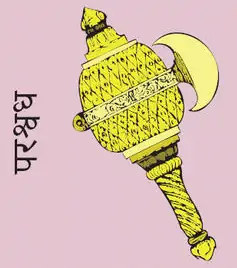
Loving Ganesha knows sometimes strong measures must be taken to fulfill a righteous goal, like crashing through a jungle. He uses a battleaxe as a mind force.
Mahaparashu, Large Axe
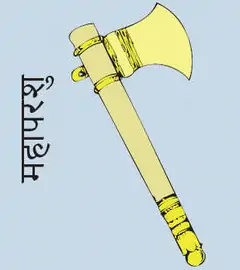
Loving Ganesha often brandishes a big axe. This powerful weapon frightens off asuras and banishes malicious thoughts of those who intend harm to His devotees.
Trishula, Trident
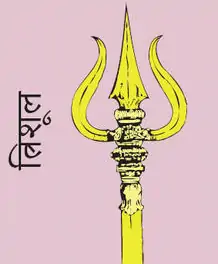
Loving Ganesha makes His way through the mind’s vast complexities with His abilities represented by trishula, His three-fold power: Love, Wisdom and Action.
Narikela, Coconut
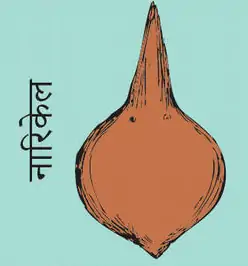
Loving Ganesha holds the coconut, symbol of the ego, soft and sweet inside, hard and rough outside. When we break a coconut to Him, we break the ego’s hold on us.
Dhvaja, Flag

Loving Ganesha is the spirit of mirth. On festival days, the saffron Hindutva dhvaja flies proudly over His temples, bringing crowds from near and far.
Bhagnadanta, Broken Tusk
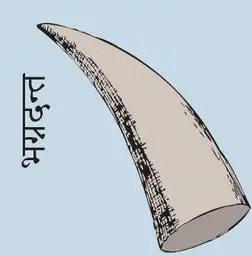
As the story goes, Ganesha broke off His right tusk in a sacrificial act to use it as a stylus while taking Vyasa’s dictation. Thus he teaches us that we must finish what we start.
Pashanadarana, Pick Axe
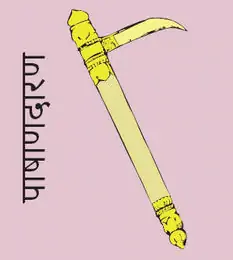
Loving Ganesha is not naive by any means. He knows that trials await devotees, and that He must, in order to respond to prayers, pick, pick, pick away their mental dross.
Agni, Fire
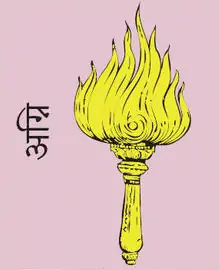
Loving Ganesha activates His fiery powers, capable of consuming our dross, of destroying our residual karmas, if we but consign our misdeeds to the purifying flames.
Khadga, Sword
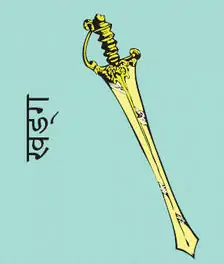
Loving Ganesha has a sword bejeweled with precious gems. It gives notice to those who respond only to fear of His enmity to crime and His abhorrence of hurting.
Phala, Fruits
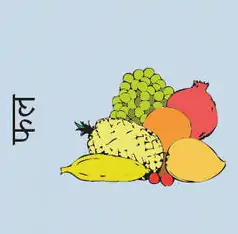
Loving Ganesha, dweller in the forest, enjoys all the Earth’s many life-sustaining fruits. He wants parents and children alike to stay healthy by eating lots of energy-giving fruits.
Mulaka, Radish
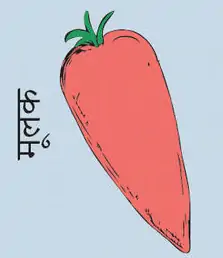
Loving Ganesha, by His partiality for the simple radish, makes us grow food that is good for us. He knows devotees may grow more than they need just to please Him.
Khetaka, Shield
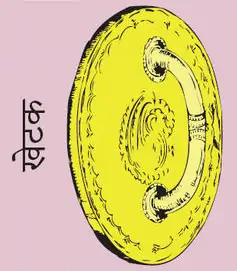
Loving Ganesha holds the shield of divine security, symbol of His power to defend lands of the upright, to preserve traditions and to protect all souls on the spiritual path.
Amra, Mango
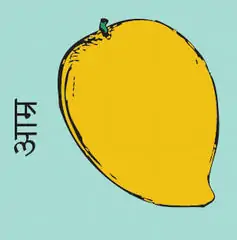
Loving Ganesha says of the mango: “It was given to Me from Lord Siva’s own hand after performing My first wisdom act. It represents the highest spiritual fruition.”
Tritiyakshi, Third Eye
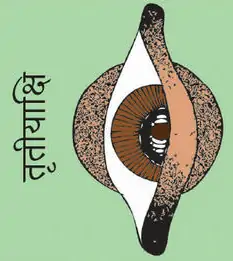
Loving Ganesha, as do we all, has three eyes, not two, the third being the eye of the mind, of spiritual sight. With this eye He sees the reality behind the world’s seeming.
Ratnakumbha, Pot of Gems
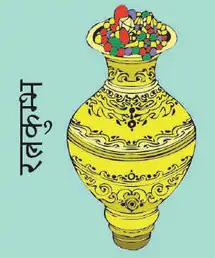
Loving Ganesha knows the magical power resident in gems. Diamonds, rubies, emeralds are like human souls, each with a different color, faceting, loveliness and value.
Garitra, Grains
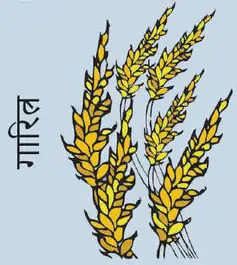
Loving Ganesha knows there are many kinds of people and they need variety in diet. He protects the cultivation of all kinds of grains that make their bodies strong.
Ikshukanda, Sugar Cane
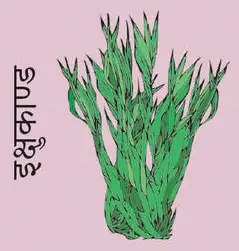
Loving Ganesha is fond of sugar cane, in fact, of anything sweet. Being the Lord all children adore, it is His joy to see their happy eyes light up when offering sugar cane.
Madhukumbha, Pot of Honey
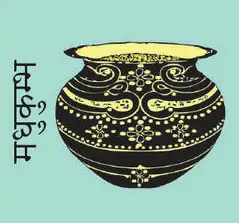
Loving Ganesha wears a wide smile across His face when offered a pot of sticky honey. It is, to Him, like moksha itself, the sweetest of all things sweet, worth any effort.
Kadaliphala, Banana
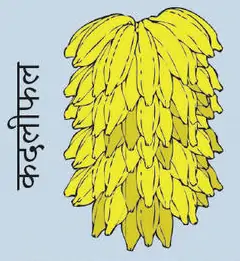
Loving Ganesha has in His hand the banana, ripe and ready to eat. He looks at it longingly, yet would give it up in a moment should a devotee smell its fragrance.
Yogadanda, Meditation Staff
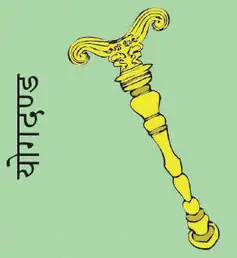
Loving Ganesha rests His arm upon a short staff when talking to devotees and when in deep samadhi. He finds it helps Him meditate more effortlessly, more deeply.
Trina, Grasses
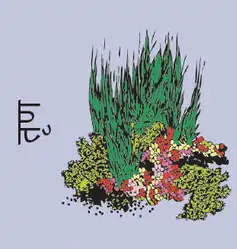
Loving Ganesha knows that there are many kinds of animals, little and big. Each needs a special environment and foods, so He protects the grasses, little flowers and seeds.
Tila Gola, Sesame Ball
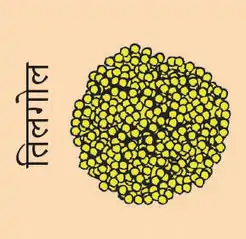
Loving Ganesha teaches us that size may be immense but there is nothing too small to overlook. In His trunk is a sweet made of tiny sesame seeds, and He rides on a tiny mouse.
Shuka, Parrot
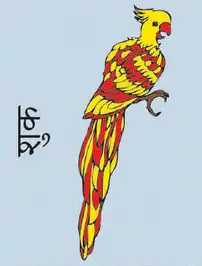
Loving Ganesha delights when the parrot talks and shows he is happy. Perched in Ganesha’s hand, he greets all who come and go, giving his opinion when they are alone.
Ananasa, Pineapple
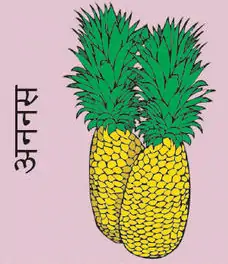
Loving Ganesha holds the pineapple and is ready to slice it to share with those in His aura. Giving and sharing is our lesson from the sweet pineapple that He gives us.
Mushika, Mouse
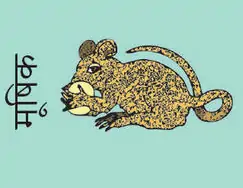
Ganesha’s companion, a mouse, attests to the all-pervasiveness of the elephant God. Mushika, the mount or vahana, carries Him into the mind’s every nook and cranny.
Lambodara, Big Belly
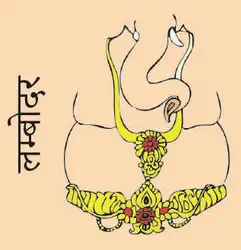
Loving Ganesha has this world and all the billions of galaxies in His abundant belly. All known and unknown universes are contained within His prodigious girth.
Swastika, Mark of Auspiciousness
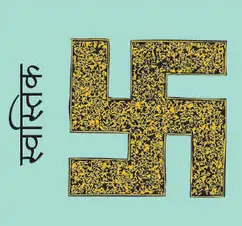
Loving Ganesha’s good fortunes are represented by the swastika, a sign of luck and auspiciousness. Its crooked arms show how life is filled with change and indirection.
Jambira, Lime
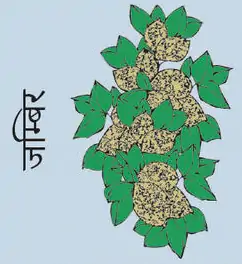
Loving Ganesha is a practical God, and it is His wish that all who know Him drink the juice from one of His favorite fruits. He wants them to be healthy and enjoy life.
Aum, Om, Cosmic Sound

Loving Ganesha is Aum/Om. He is the A, the base sound of the universe; He is the U, the sound of the galaxies; and He is the M, the sound of the planets and the littlest stars.
Shunda, Elephant Trunk
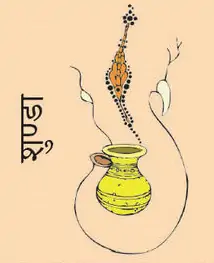
Loving Ganesha has a versatile trunk, and makes it known that it is a symbol of His capacity to always love His devotees. With it He reaches out to touch each of them.
Nilapadma, Blue Water Lily
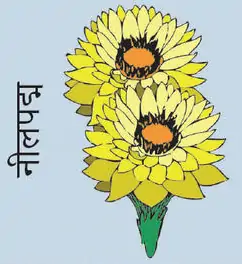
Loving Ganesha often sits by a lily pond, pondering the current state of the universe. His province is to see that all is in order until the next Great Dissolution, mahapralaya.
Panasa Phala, Jackfruit
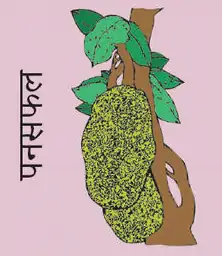
Loving Ganesha’s favorite, jackfruit, is a potato-like vegetable, a chewy nut and sweet yellow fruit all in one. Like the jack’s stem, our attachments, though small, are strong.
Prabhavali, Fiery Arch
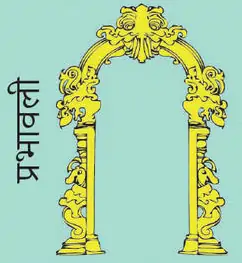
Loving Ganesha sits within an arch depicting creation, preservation and fiery dissolution. Above is the God of time, Mahakala, who ultimately claims everything.
Dadima, Pomegranate
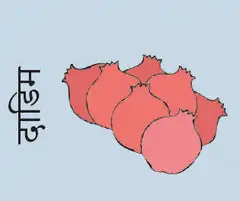
Loving Ganesha knows we may be led astray by ways of worldly people who eat meat. He offers us red dadimas, as if saying: “Its many pink seeds are so much better than flesh.”
Nagapasha, Snake Cord
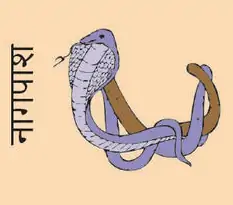
Loving Ganesha wears a snake around Him to tell us all that we have to be like Him and control our instinctive, animal mind. Yes, it is possible through the grace of this God.
Kapittha, Wood Apple
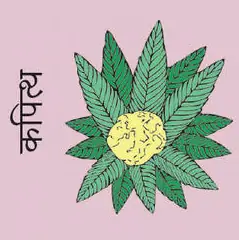
Loving Ganesha loves wood apples, kapittha, called the elephant fruit. Sweet to eat, packaged in a tough shell, it is a pharmacy of ayurveda’s secret medicinal potencies.
Laddu, Milk Sweet
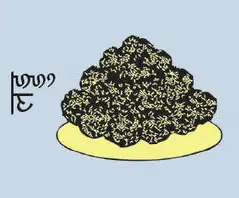
Loving Ganesha was never accused of turning down a laddu, rich with milk, flour and sugar. Maybe it reminds Him of being young. Every young one loves sweets.
Kavacha, Armor
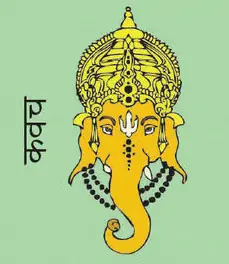
Loving Ganesha’s sculpted form in temples and shrines worldwide is encased on festival days in silver and gold facsimilies. He likes splendor, pomp and adulation.
Shashikala, Crescent Moon
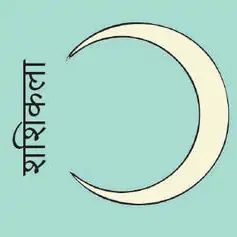
Loving Ganesha, like His father, Siva, wears the crescent moon on His great head. It is a symbol of time’s passing, of auspicious moments and of the powers of the mind.
Gam Mantra
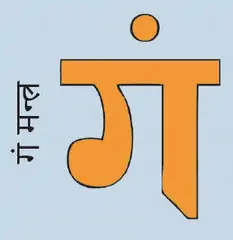
Loving Ganesha is invoked by devotees through this mystery mantra. Upon hearing it, He immediately responds. Easy of access, He never delays in solving our problems.
Yajnopavita, Sacred Thread
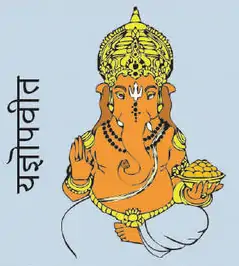
Loving Ganesha wears across a massive shoulder the holy cord to remind us that we, too, can be twice born through His grace, that none is low and none is high.
Jambu, Rose Apple
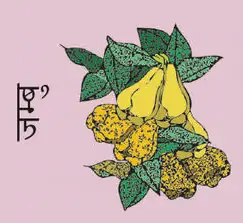
Loving Ganesha loves the rose apple among many other wonderful fruits and vegetables. He shows us the path to good health, harmlessness to creatures and love.
Payasa, Pudding
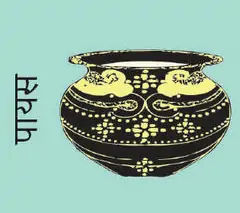
Loving Ganesha is seen from time to time enjoying sweet tapioca pudding, likened to the love and kindness that comes from caring for others as one’s very own self.Shakti, Consort
Sakti, Consort
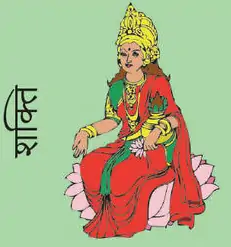
Loving Ganesha is often seen with two female consorts, or shaktis. They represent ida and pingala, the two life currents, emotion and intellect, that hold us close to Earth.
Muladhara Chakra, Base Center
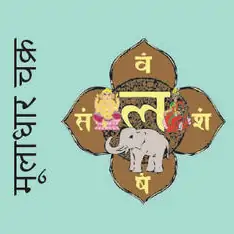
Loving Ganesha, sitting on the four petalled muladhara, rules memory and knowledge as the gatekeeper to the six chakras above and the guard of the seven below.
Vriksha, Trees
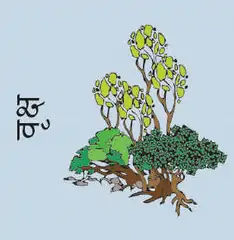
Loving Ganesha is the giver of gifts from healing trees, the practitioner of ayurveda, the great doctor who helps us gain the knowledge of health from medicinal plants.
**Credits to and published by Himalayan Academy

